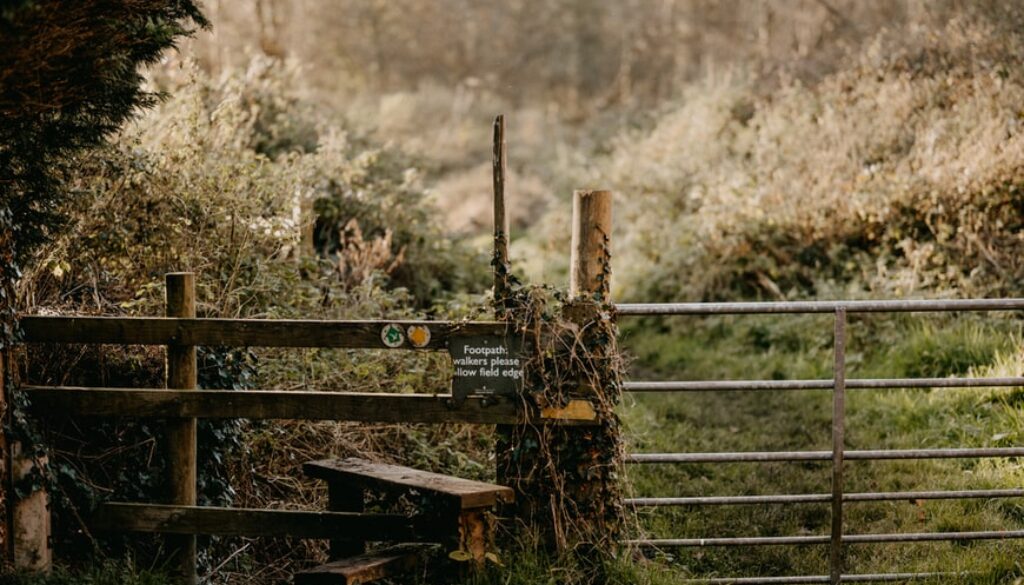Public rights of way and Landowners’ Responsibilities
Public rights of way and Landowners’ Responsibilities
Many landowners will find that a public right of way runs through their land. This right of way may be a footpath, bridleway, a restricted byway or unrestricted byway. Although these rights of way are available to the public, there are certain responsibilities that fall to the landowner.
Local authorities will usually have a definitive map showing the public rights of way in the area, so if you are unsure as to the existence of a public right of way over your land or you are simply unsure as to the category it falls within, you should be able to find out by viewing the definitive map for your locality.
If you have confirmed that there is a public right of way over your land, you will have a number of obligations.
You should avoid putting obstructions on or across the route, such as permanent or temporary fences, walls, hedgerows, padlocked gates or barbed wire. You must also make sure that vegetation does not encroach onto the route, including from the sides and above. You will need to bear in mind the different clearance heights that might be required of difference users, for example horse riders as opposed to hikers. Obstructing a right of way is a criminal offence and the Highway Authority has the right to demand you remove any obstruction and then recover any costs from you. In addition, you must not disturb the surface of byways, restricted byways or unsurfaced public roads.
Field-edge and cross-field public rights of way
You must not cultivate footpaths or bridleways that follow a field edge. The minimum widths to keep undisturbed are:
- 1.5 metres for a field-edge footpath; and
- 3 metres for a field-edge bridleway.
You should also avoid cultivating a cross-field footpath or bridleway. If you absolutely have to, you should make sure that the footpath or bridleway remains apparent on the ground to a minimum width of 1 metre for a footpath or 2 metres for a bridleway; and ensure that it is not obstructed by crops. Any cross-field footpath or bridleway that has to be cultivated should be restored to at least its minimum width so that it is reasonably convenient to use within 14 days of it being cultivated for that crop and within 24 hours of any subsequent cultivation, unless a longer period has been agreed in advance with the Highway Authority.
Waymarking and warning signs
If official waymarking leaves it unclear as to where the public right of way goes, you may add informal waymarks to remedy this, so long as they are not misleading to the public, and you must indicate the route of a reinstated cross-field footpath or bridleway. If it is necessary, you should erect signs to warn users of any potential dangers that are not immediately obvious, for example slurry lagoons. It should be noted, however, that it is an offence to erect a misleading sign and local authorities have the power to remove them.
Structures for access
If there is a stile or gate on your property that provides access to the public right of way, it is your responsibility to make sure that it is safe and reasonably easy to use. However, it is possible to claim 25% (or sometimes more) of the cost of replacing this equipment from the highway authority. Where a stile needs replacing, it is worth considering (with the highway authority) whether this can be done with a gate or a gap, so that it will be less of an impediment to people with mobility problems. It is important to note that you must have permission from the highway authority before any new structure is installed on a public right of way.
Livestock and public rights of way
Bulls over the age of 10 months of certain recognised breeds are banned on fields that are crossed by a public right of way. These breeds include: Ayrshire, British Friesian, British Holstein, Dairy Shorthorn, Guernsey, Jersey and Kerry.
Bulls over 10 months old of other breeds must be accompanied by cows or heifers when in fields with public access. Any warning notices relating to livestock must only be displayed when the animal is present in the field.
Horses may be kept loose, as long as they are not known to be dangerous. You may be prosecuted if you keep any potentially dangerous animal on land that is crossed by public rights of way.
Spraying on land crossed by public rights of way
If you do have to spray on your land that is crossed by a public footpath or bridleway, use pesticides that have been approved for such use and always follow the product instructions. You may provide an alternative route if the by-way crosses the land but must not close the right-of-way; if the public continue to use the right of way despite warnings, you must stop spraying temporarily. For more information get in touch with us on 01270 611 106.



